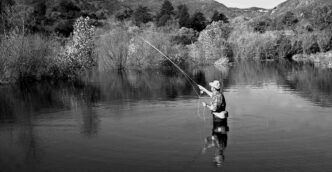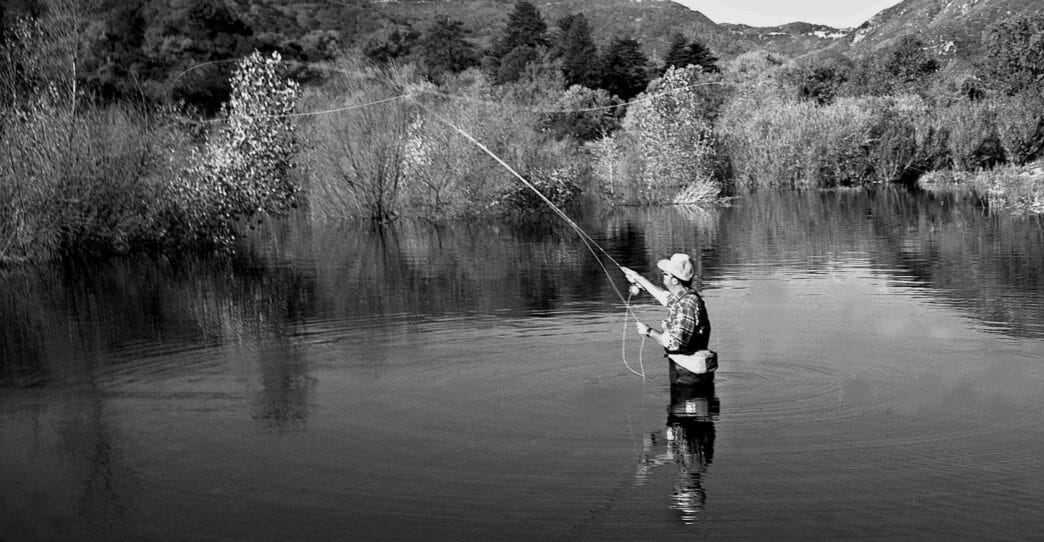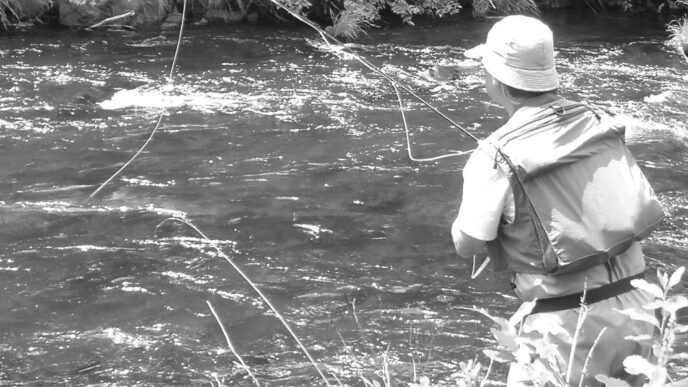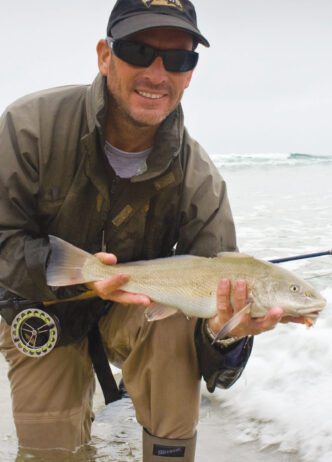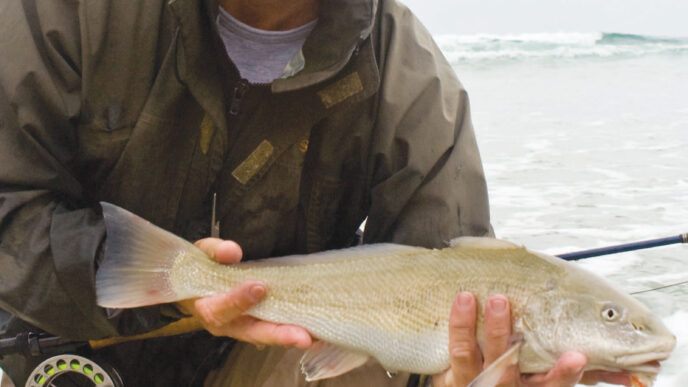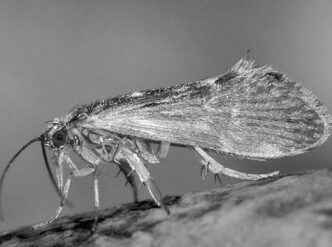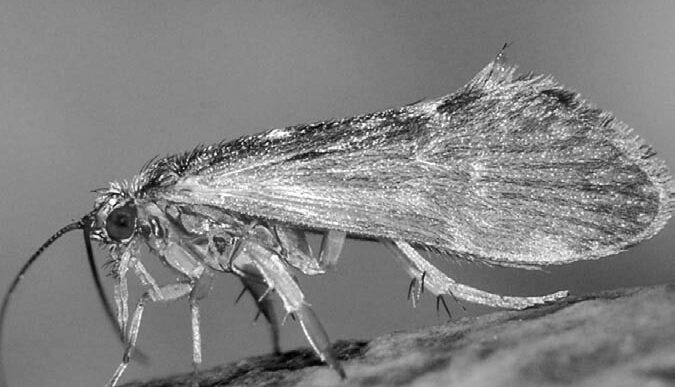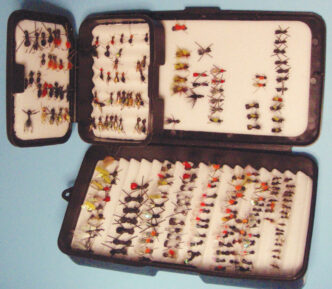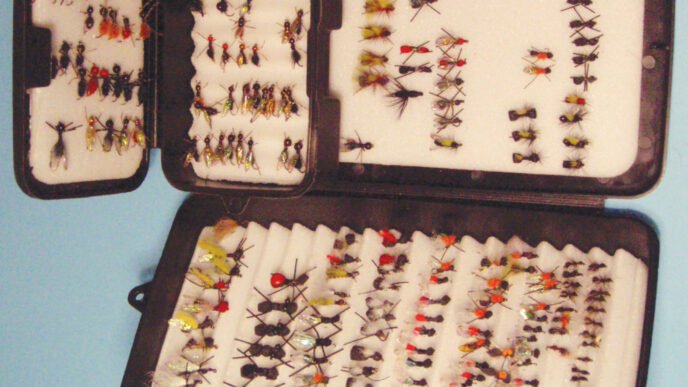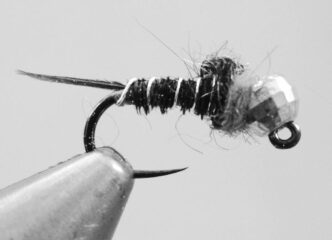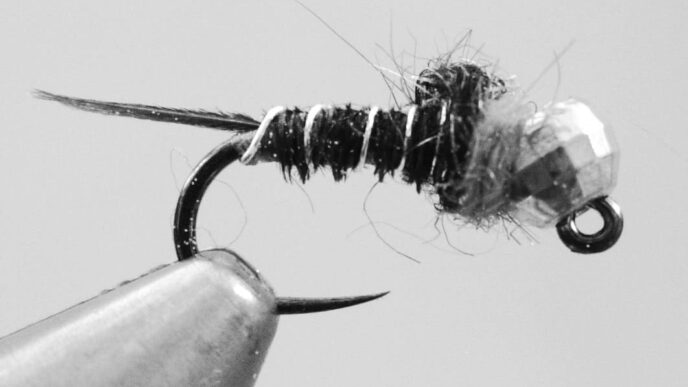The periods of low light at the start of the day and end of the day are the best times to be abroad on your favorite bass lake. The reason is obvious. All fish need food and protection from predators. During daylight hours, both predators and prey are more easily seen, which means this is also the time when fish reduce their visibility by moving into ambush spots or hidey-holes. Periods of low (or no) light, conversely, allow fish to leave shelter and actively search for food. The problem for the angler is that we normally like a bit of light so we can see where we are going and what we are doing. I’ve fished at night over the years, and while it is effective — especially for very large striped bass — I don’t enjoy blundering around the edges (or the middle) of a lake in the dark. Unexpected things happen. Some years ago, an acquaintance of mine was fishing for striped bass well after midnight. He grew fatigued and decided to take a nap on the lake’s shore. Soon he was dozing, but something woke him — he could feel his backpack being pulled out from under his head. When my friend aimed a flashlight at the intruder, he was face to face with a black bear that was after his late-night lunch. Both bear and man quickly departed in opposite directions.
Another friend fell down an embankment on a dark night and struggled for more than an hour to get back on to the trail. He was fishing alone and could easily have been stuck there had he broken a leg. As it was, he was stiff and sore for several days after his fall, and he lost several items out of his vest and put a nasty scratch on a new fly reel.
Like many anglers, I gave up fishing at night as I grew older and no longer wanted to risk life and limb for the chance at a big fish in the dark. Dawn and dusk also afford good opportunities to catch trophy fish on a fly, and I can at least see where I am going. Maybe I’m just lazy, but of the two low-light periods, I much prefer the evening “swing shift,” rather than get up before daylight to be on the water while the shadows are still holding the surface in darkness. This is especially true during the late spring. The spawn has finished, and the bass are going about their more normal yearly activity, lurking in darker cover or retreating to the deeper structure around the shore during the day and venturing out to prospect in the shallows as the sun departs and surface temperatures begin to wane. Later in the summer, when water temperatures soar to the upper limit of what bass like, the morning shift may produce more success, but until late July or into August, I will take dusk over dawn.
On most of the lakes I fish, there’s always a surge of human activity late in the afternoon. A lot of people will show up for an hour or two of recreation after a day of work, and this includes water skiers and personal watercraft riders. If you wait out this buzz of two-stroke noise, however, the lake will settle into a quieter posture after the sun leaves the water and the dinner hour approaches.
When fishing a lake in the afternoon I will initially start on the western side. That’s where the shadows will grow out from the shore and cloak the water in the shade that the hunters and hunted will both seek. While the sun is still up, I target the shady side of such things as tree trunks, floating weeds, docks, and other objects that provide any shade before the sun sets (I stay away from a lake’s main marina docks, however, because this is where much of the public activity is clustered).
In the evening, you have to pay attention to little signs that tell you the fish are beginning to stir. Of course, it’s hard to mistake the splashy rise of a bass to a dragonfly or a largemouth chasing baitfish around a dock, but there are also subtle clues that tell you that bass are starting to feed actively. The slightest quiver of reeds where there’s no wind should tell you that something large and powerful is pushing around in search of food. The disturbed surface created by a school of baitfish known as “nervous water” tells you there is food in the area and that predators probably are not far behind.
Edges where light and shadow meet are obvious choices for my attention. You can pretty much bet that a bug or a baitfish that strays into a sunlit area will soon be eaten if a predatory fish lurks in nearby shadows. A friend of mine calls it “hitting the seam” — that is, placing the fly right on the edge of shadow and sun. When you fish edges, try to move the bug or streamer along the edge, rather than from sun to shadow or the reverse. I try to keep the fly in the sun where it can be seen readily by everything that lurks in the shadowed area. You want to slow down your presentation when fishing these edges. You don’t have to pop or strip vigorously — the bass doesn’t need to locate the fly by sound. A minimum of movement, more quivers than pops, is what you are after. This is a great place and time to fish such flies as adult dragonfly and damselfly patterns, or perhaps a large moth imitation.
One fine afternoon on Big Bear Lake’s north shore, with the shadows just beginning to creep onto the water, I fished a Henshall Moth (which has a large deerhair body with extended bucktail wings) beside a private dock where two boats were tied up about six feet apart. The boats provided both overhead cover and shade, and the area between them was still in waning sun. I dropped the moth into the opening and just let it sit there.
The afternoon wind was dying, and only a slight riffle remained on the surface. It was enough to give the Henshall Moth a slight trembling action. About 20 seconds into this “do nothing” presentation, I saw a large olive shape begin to appear just below the fly. Several more seconds passed while I tried hard not to do something stupid. I left the fly alone (my hands were shaking so hard I was afraid I would move the fly), and finally the big bass sucked it in with only a slight ripple. This was strictly a visual presentation. The fly hadn’t created any disturbance to speak of.
Once the sun is well off the lake’s surface, you can expand your fishing to more open water. When the water is in shade, but the sky is still bright with light, the situation is rotated 90 degrees: Instead of shade and sun being side by side, the seam is now between the water and the sky. The water below the surface is in shade, ideal cover for hunted and hunters, but the sky is bright. This means that bass, like all aquatic predators, will move out and begin to hunt by looking up the bright background of the sky to locate prey.
The combination of dark water and bright sky is where a bass bug rules. Its bulky shape outlined against the shining sky stands out well to anything lurking below. If there’s a ripple on the water, you can work the bug a bit harder to create both sound and visual stimuli. If, as is often the case, the departure of the sun brings a glassy calm to the lake, then tone down your presentation and do nothing, or at least not much.
Whether you’re wading out a bit from the shore or holding a float tube or pontoon boat still in a cove as the late afternoon slides into evening, late evening is a magic time. The boat traffic begins to fade, frogs start their croaks, and swallows and bats zip across the water in search of the hatching insects that dusk brings. Other sounds signal the onset of fish feeding on surface insects or baitfish highlighted against the still-bright sky.
The action won’t last. You may have anywhere from an hour to perhaps as little as 15 minutes of the best fishing of the day, until distant street lights begin to come on and you can no longer see the swift flight of bats across the cove. You have to resist the urge to fish faster in hopes of getting more strikes. Be methodical, if you can. The darker it gets, the more action you can give the fly or bug, but rather than slashing at the water in all directions, try to maintain the pace and focus you had earlier, and you’ll be rewarded. As night brings out the stars, surface activity will recede, and finally it will be time to head for home and a well-deserved supper.
There are a lot of great moments in fly fishing. The smooth rise of a trout to a dry fly is exciting, but no more so than the tumultuous strike of a heavy bass to a carefully-fished popper in the sweet shadows of a summer evening.



